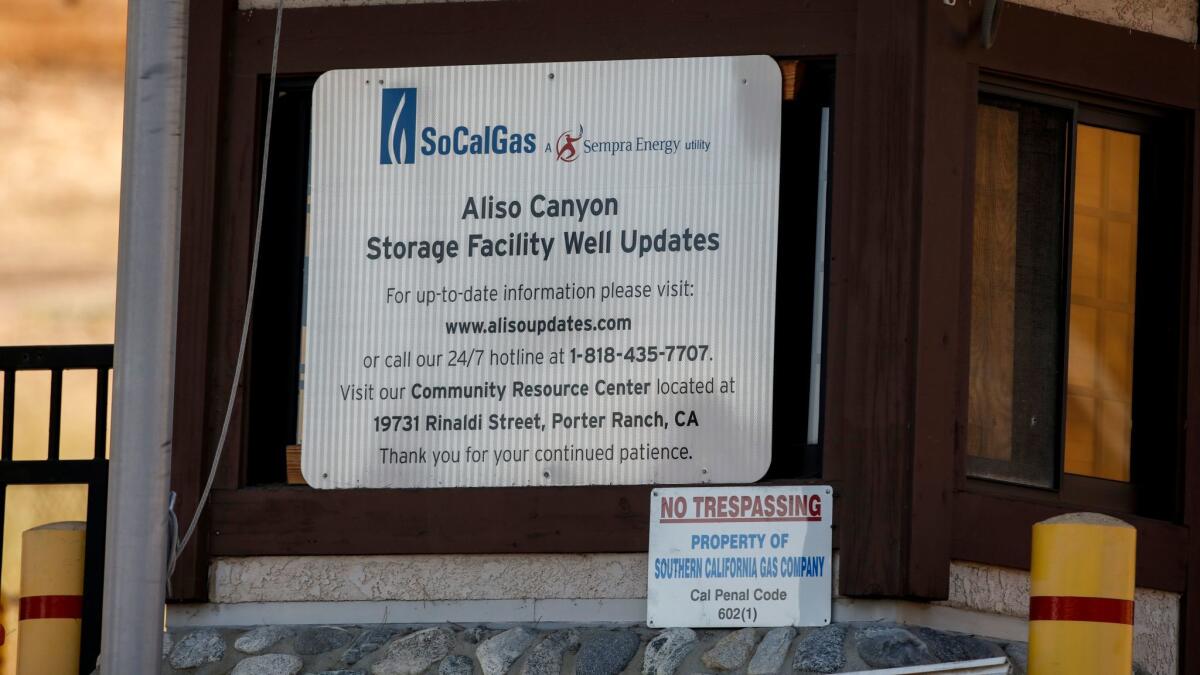Weeks after Aliso Canyon reopening, several gas storage wells were taken out of service

Just weeks after Southern California Gas Co. resumed injecting natural gas into the storage wells at Aliso Canyon, one-third of those wells were taken out of service.
In an Aug. 28 letter to state regulators, SoCalGas wrote that workers had observed a gradual buildup of pressure within the casing of 13 of 39 wells that were being returned to service and took them out of operation. SoCalGas fixed two of the wells and returned them to operation. Eleven remain offline while the company investigates and corrects the cause of the pressure buildup.
No gas was released into the atmosphere, according to the SoCalGas letter and state regulators.
“I want to stress, Aliso Canyon is safe,” Lisa Alexander, SoCalGas vice president for customer solutions and communications, wrote in a note to the Aliso Canyon Community Advisory Council.
“The pressures observed never reached levels of concern and were well below the maximum operating pressures of the equipment,” she wrote.
The highest pressure recorded in the wells was 700 pounds per square inch, according to the state Department of Conservation’s Division of Oil, Gas, and Geothermal Resources, or DOGGR. Each of the wells’ outer casings had previously passed testing to withstand more than 3,500 pounds per square inch.
SoCalGas resumed injections at Aliso Canyon on July 31, shortly after the California Public Utilities Commission and DOGGR deemed the facility safe to reopen.
Attorneys for L.A. County appealed that decision on the grounds that SoCalGas had failed to conduct required safety and environmental reviews and to identify the root cause of the massive leak, which began in October 2015 and ultimately spewed more than 100,000 tons of methane into the air before being plugged. A judge eventually denied the county’s request to halt the reopening.
Those opposed to the use of the natural gas storage facility said the latest development shows that the wells are not safe.
“Aliso Canyon will never be safe and needs to be immediately closed,” the advocacy group Food and Water Watch said in a statement. “After experiencing one of the hottest weeks of the year, the threat of blackouts has undoubtedly faded and we once again have shown that we can meet demand without Aliso Canyon.”
SoCalGas and state regulators have repeatedly cited the possibility of energy shortages as a reason to reopen Aliso Canyon.
The company did not provide an explanation for the pressure buildup, but in an emailed statement DOGGR said the elevated pressures indicate that adjustments need to be made to the “packers” that, when fit tightly, help seal the well.
Kashy Aminian, a professor of petroleum and natural gas engineering at West Virginia University, said that while pressure increases in the tubing that delivers the natural gas is to be expected following injection, “there usually should not be that much pressure in the annulus [space between the tubing and casing] unless there is some leaking.”
He said the pressure buildup did not spark too much concern yet. “I don’t believe it’s a huge problem at this point because they have detected it and stopped injecting,” he said.
Twitter: @AgrawalNina
More to Read
Sign up for Essential California
The most important California stories and recommendations in your inbox every morning.
You may occasionally receive promotional content from the Los Angeles Times.











